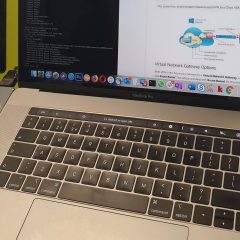Cisco – Configuring Dynamic Multipoint Virtual Private Networks DMVPN
DMVPN KB ID 0000954 Problem A while back I uploaded a run through on how to deploy GRE tunnels and protect those tunnels with IPsec. That point-to-point GRE tunnel is a good solution, but if you have a lot of sites it’s not a solution that scales very well. Yes you can have 2147483647 tunnel interfaces, but good luck manually configuring all those tunnels and even if you did, if you want each of your remote sites to talk to each...
%Error copying system:/running-config
%Error copying system KB ID 0000987 Problem I love GNS3, it is a brilliant piece of software, I use it for bench testing and proof of concept work. Yes is can be a bit clunky sometimes, but it’s FREE! I had a project open with about four ASA’s on it, and it would not save the config on just one of them. HostName(config)# copy running-config startup-config Source filename [running-config]? Cryptochecksum: fdf42190 76959bba...
Connecting GNS3 to VMware Workstation
GNS3 to VMware KB ID 0000996 Problem A while back I got an email “Here is a suggestion for an article. ‘How to link GNS3 with VMware Workstation'”. Sorry it’s taken me so long to get round to it, here you go Daniel Newton. Solution: GNS3 to VMware Before we start I’m assuming you have installed VMware Workstation, and you’ve installed and configured GNS3. 1. Launch VMware Workstation > Edit >...
Mac OSX – GNS3 Connecting To the Internet
KB ID 0001170 Problem I have a love hate relationship with GNS3, I appreciate it’s brilliant, (when it works). I also appreciate that it’s free, and people put a lot of effort into its development for very little reward. But when I try to do simple things, like connect my projects/labs to the internet and it’s massively overcomplicated I get pretty exasperated. With Windows this is easy, (I’ve probably blogged...
GNS3 Update – Could Not Find a VM Named ‘GNS3 VM’
KB ID 0001160 Problem GNS3 had nagged me the last few times I tried to use it about upgrading, so I downloaded and installed the update and it stopped here; Could not find a VM named ‘GNS3 VM’ is it imported in VMware or Virtualbox I use both VMware Fusion and Virtualbox. But Virtualbox looks after all the VM’s I use in GNS3. Either way I did not know what I was looking for, and the download (and application folder)...





